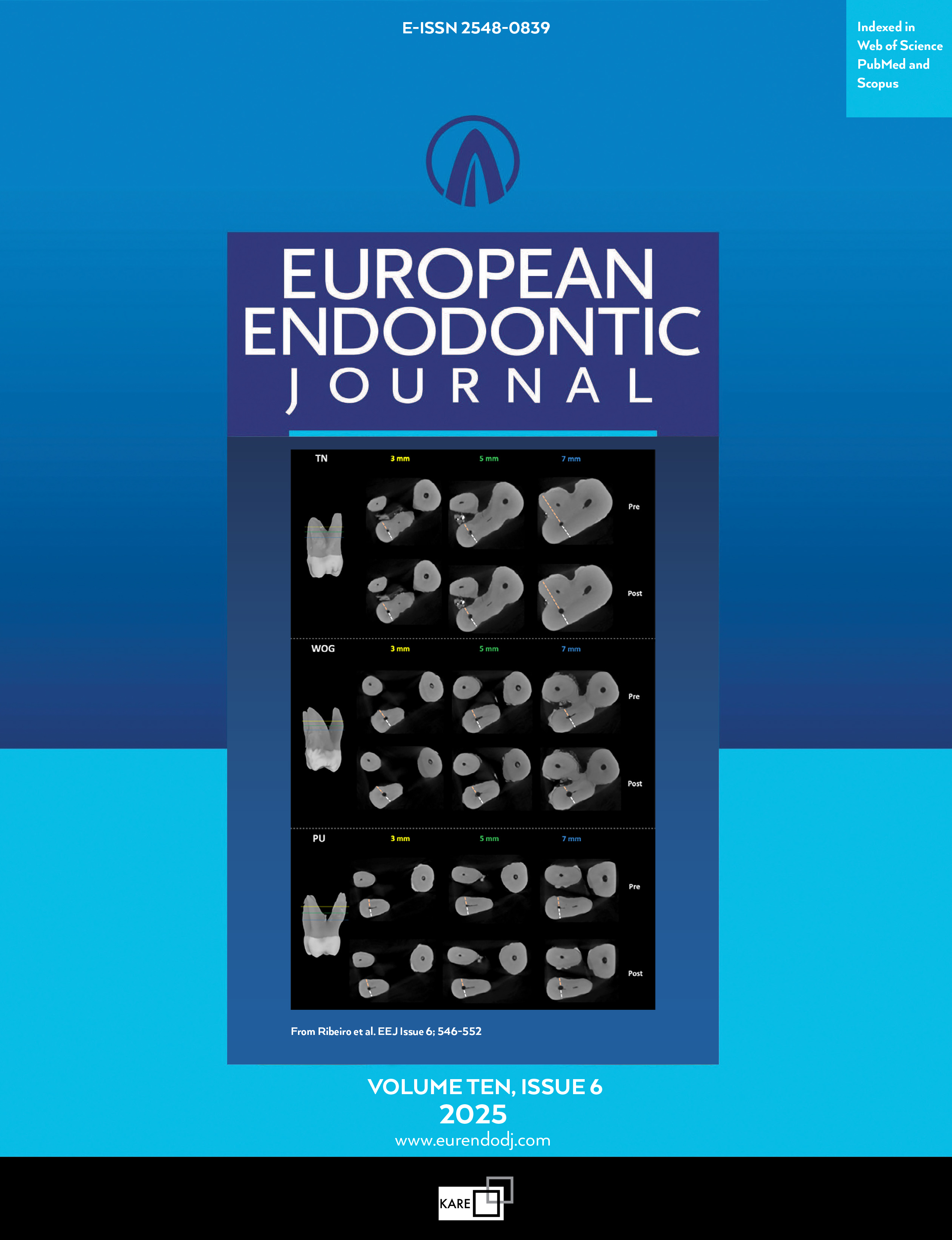Metrics
2024 IMPACT FACTOR
5 year Impact Factor
Eigenfactor Score
2024 CiteScore
Journal Citation Reports
(Clarivate 2025, JIF Rank)
Comparative Evaluation of Stress Distribution Against the Root Canal Wall at Three Different Levels by Using TruNatomy, XP-endo Shaper, F360, and 2Shape Files: A Finite Element Analysis
Rimjhim Singh1, Sandeep Dubey1, Palak Singh1, Praveen Singh Samant1, Rajat Gupta21Department of Conservative Dentistry and Endodontics, Babu Banarasi Das College of Dental Sciences, Babu Banarasi Das University, Lucknow, India2Department of Metallurgical Engineering, Indian Institute of Technology BHU (IIT-BHU) Varanasi, India
Objective: The aim of this in vitro study was to assess the stress distribution of novel endodontic rotary files of different cross sections and metallurgy against the root canal wall at three different levels by using finite element analysis.
Methods: A total of 60 novel NiTi rotary files were included in this study after being scanned for any sur-face deformities using a scanning electron microscope. The scanned files were assigned into 4 groups of 15 samples each based on their metallurgy and design: Group A-TruNatomy, Group B-XP-endo Shaper, Group C-F360, and Group D-2shape files. ANSYS® 15 Workbench finite element software (Canonsburg, Pennsyl-vania, United States) was used to numerically analyse the stress created by computer-aided models of these instruments on the dentinal wall of a simulated root canal to test the mechanical behaviour of these files. All data were analysed using one-way ANOVA with post hoc Tukey analysis, the Shapiro Wilk test, and Levene's test. The significance level was set at 5%.
Results: XP-endo Shaper files employed minimal stress on the surface of dentine during instrumentation, and F360 files exerted maximum stress on the dentinal wall. However, no statistically significant difference was found among the groups in relation to the amount of stress produced at the distinct levels of the root canal wall (p>0.05).
Conclusion: There was no discernible difference in stress generation among the four groups in the current investigation. Therefore, it can be inferred that the upgrade in design and metallurgy of rotary files has the potential to downgrade the stress during the shaping of the canal and the menace of instrument breakage during their clinical usage.
Keywords: Computer-aided design, finite element analysis, nickel- titanium, rotary files, TruNatomy, XP-en-doShaper
Manuscript Language: English
(570 downloaded)


